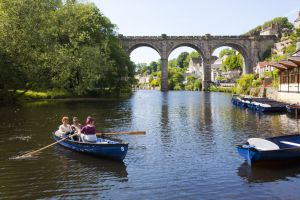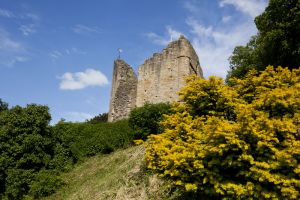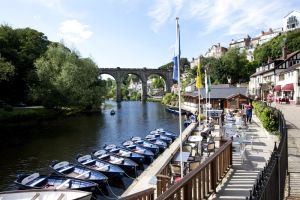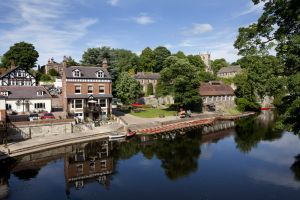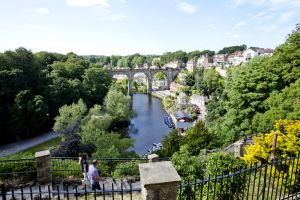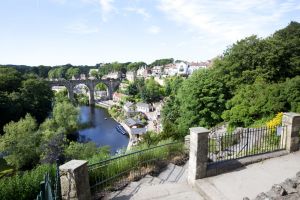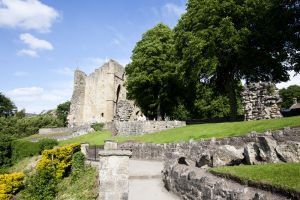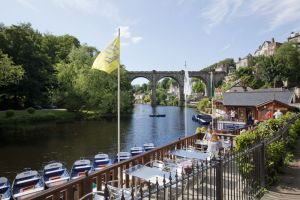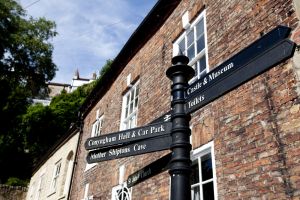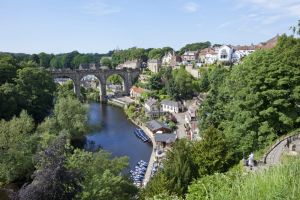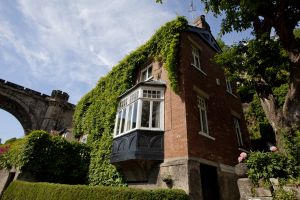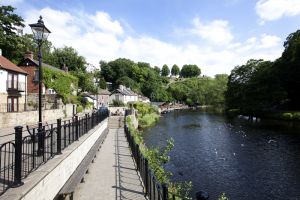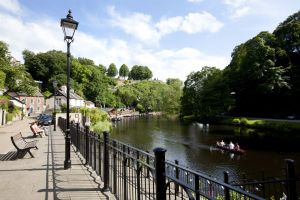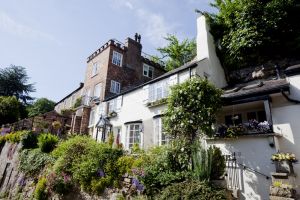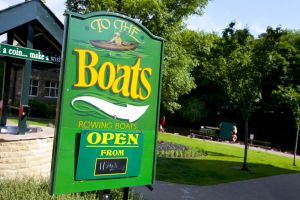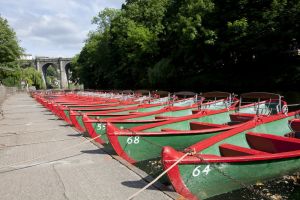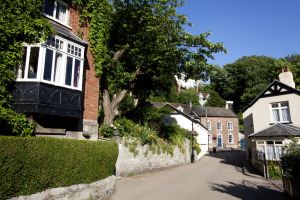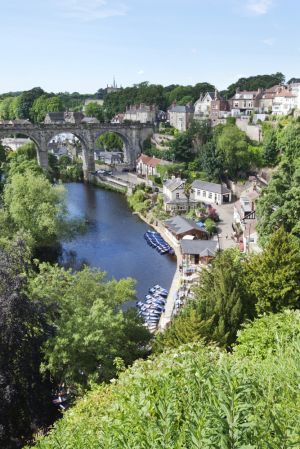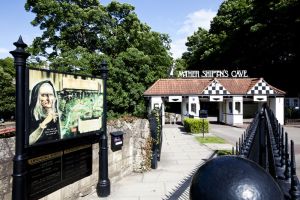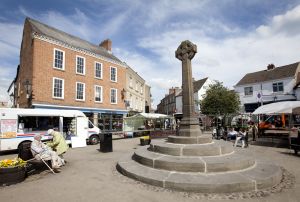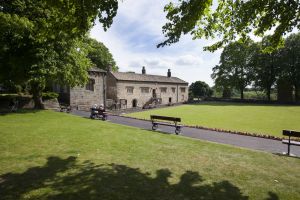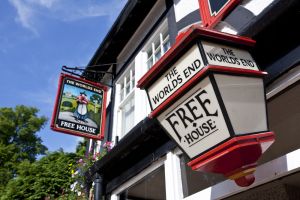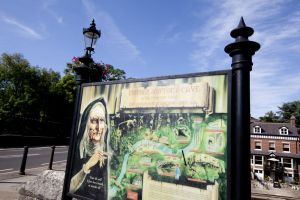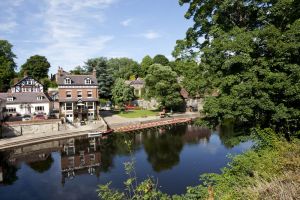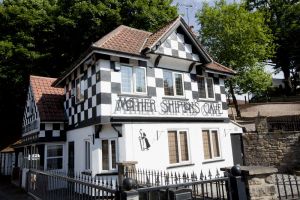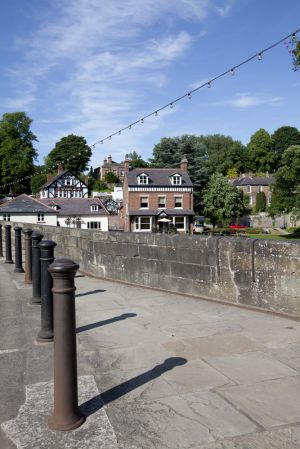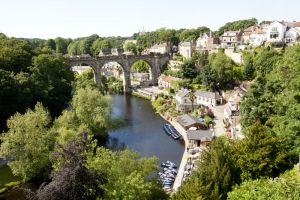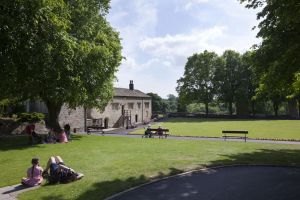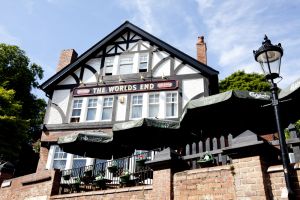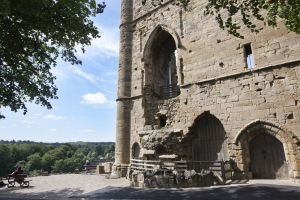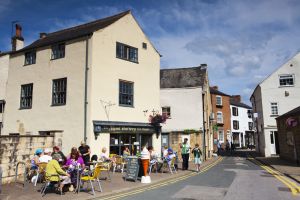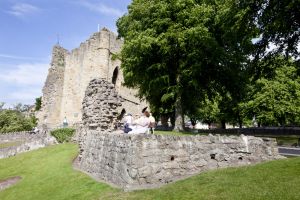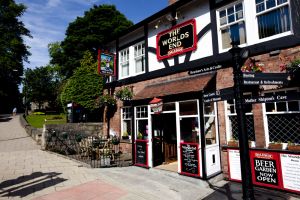Knaresborough is mentioned in the Domesday Book as Chenaresburg, meaning ‘Cenheard’s fortress’. Knaresborough Castle dates from Norman times; around 1100, the town began to grow and provide a market and attract traders to service the castle. The present parish church, St John’s, was established around this time. The earliest name for a Lord of Knaresborough is from around 1115 when Serlo de Burgh held the ‘Honour of Knaresborough’ from the King.
Hugh de Morville was granted the Honour of Knaresborough in 1158. He was constable of Knaresborough and leader of the group of four knights who murdered Archbishop Thomas Becket at Canterbury Cathedral on 29 December 1170. The four knights fled to Knaresborough and hid at the castle. Hugh de Morville forfeited the lands in 1173, not for his implication in the murder of Thomas Becket, but for “complicity in the rebellion of young Henry“, according to the Early Yorkshire Charters.
The Honour of Knaresborough then passed to the Stuteville family. When the Stuteville line was broken with the death of Robert de Stuteville the 4th in 1205, King John effectively took the Honour of Knaresborough for himself. The first Maundy Money was distributed in Knaresborough by King John on 15 April 1210. Knaresborough Forest, which extended far to the south of the town, is reputed to have been one of King John’s favourite hunting grounds.
